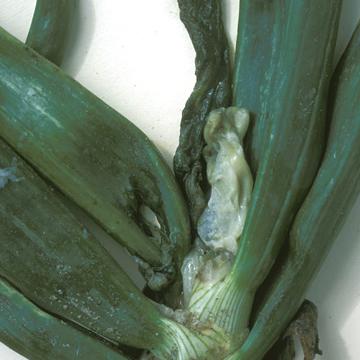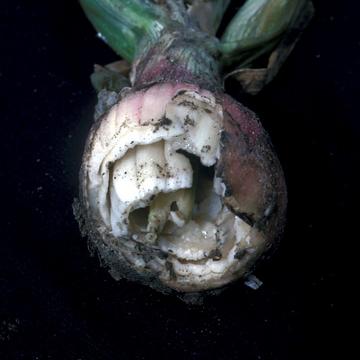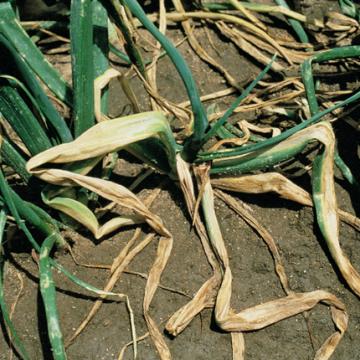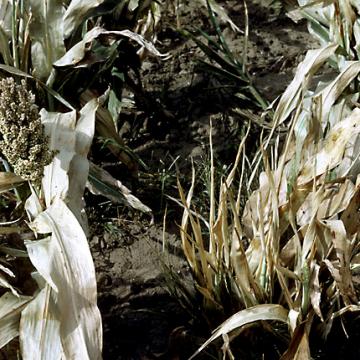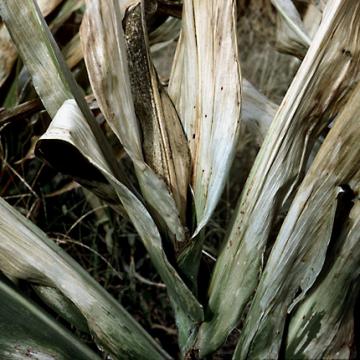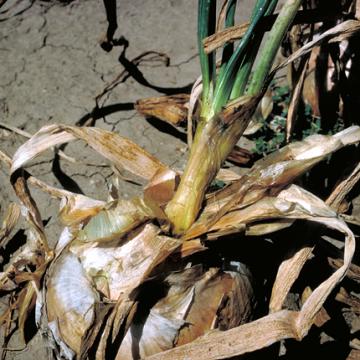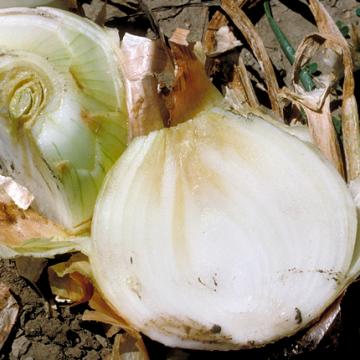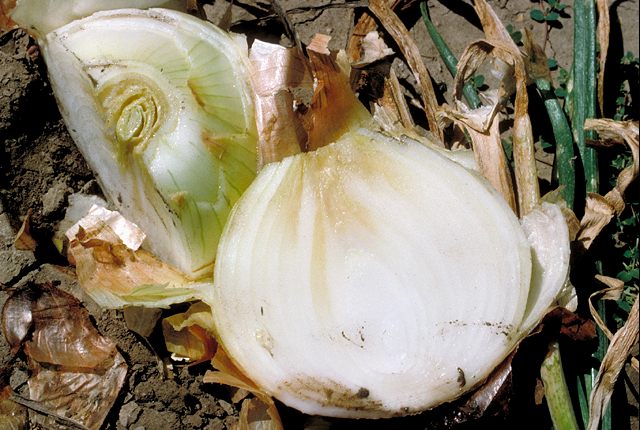DISEASE: Bacterial soft rot
HOST: Onion
Soft rot infection of leaves.
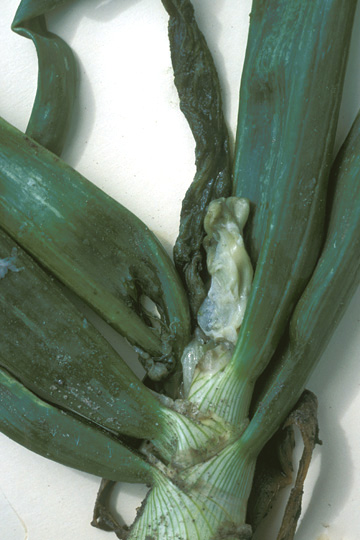
Bacterial soft rot | Onion
DISEASE: Bacterial soft rot
HOST: Onion (Allium cepa)
PATHOGEN: Dickeya sp.
PATHOGEN SYNONYM: Erwinia chrysanthemi
SOURCE: S. Mohan
DISEASE: Bacterial soft rot
HOST: Onion
Onion with bulb, stem, and leaf infections.
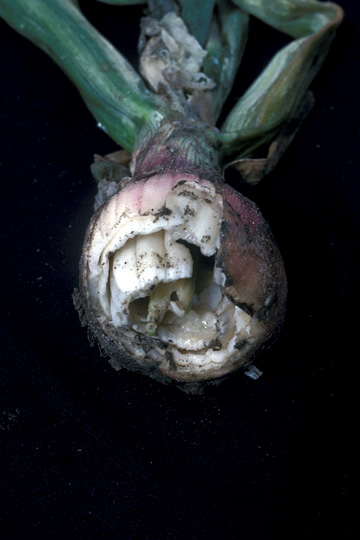
Bacterial soft rot | Onion
DISEASE: Bacterial soft rot
HOST: Onion (Allium cepa)
PATHOGEN: Dickeya sp.
PATHOGEN SYNONYM: Erwinia chrysanthemi
SOURCE: S. Mohan
DISEASE: Bacterial soft rot
HOST: Onion
Bulb with early-season soft rot symptoms.
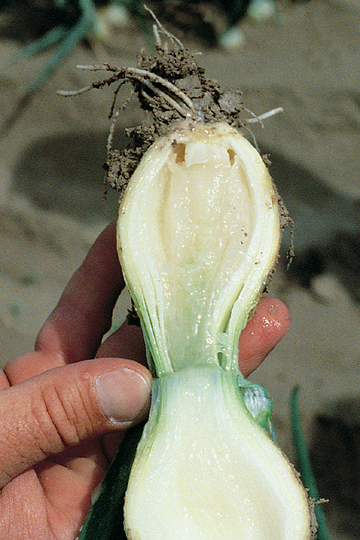
Bacterial soft rot | Onion
DISEASE: Bacterial soft rot
HOST: Onion (Allium cepa)
PATHOGEN: Pectobacterium carotovorum
PATHOGEN SYNONYM: Erwinia carotovora subsp. carotovora
SOURCE: H. Schwartz
DISEASE: Bacterial soft rot
HOST: Onion
Diseased leaves with bleaching and light brown discoloration.
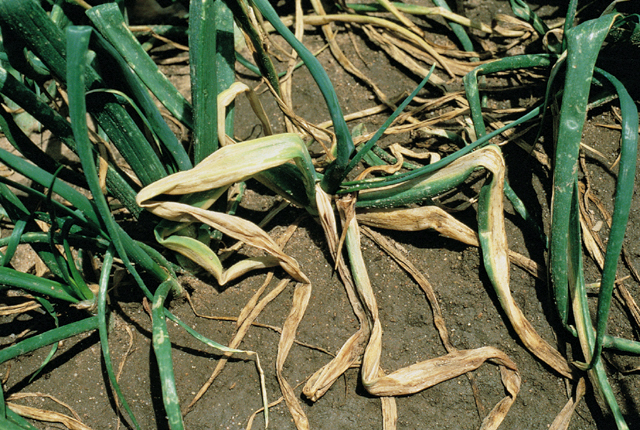
Bacterial soft rot | Onion
DISEASE: Bacterial soft rot
HOST: Onion (Allium cepa)
PATHOGEN: Pectobacterium carotovorum
PATHOGEN SYNONYM: Erwinia carotovora subsp. carotovora
SOURCE: H. Schwartz
DISEASE: Bacterial stalk and top rot
HOST: Sorghum
Row of severely diseased plants.
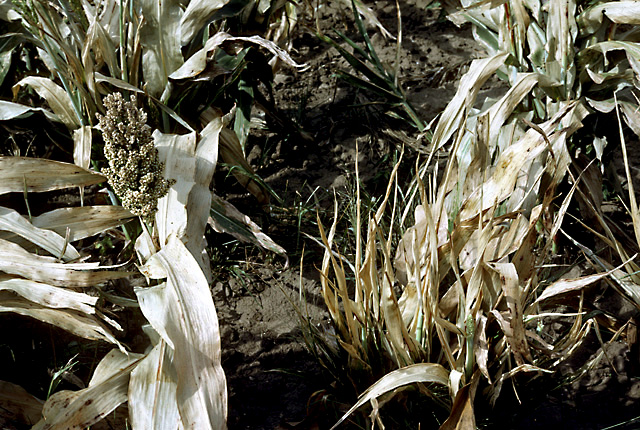
Bacterial stalk and top rot | Sorghum
DISEASE: Bacterial stalk and top rot
HOST: Sorghum (Sorghum bicolor)
PATHOGEN: Dickeya zeae
PATHOGEN SYNONYM: Erwinia chrysanthemi pv. zeae
SOURCE: L. Claflin
DISEASE: Bacterial stalk and top rot
HOST: Sorghum
Water-soaking and necrosis of severely diseased leaves.
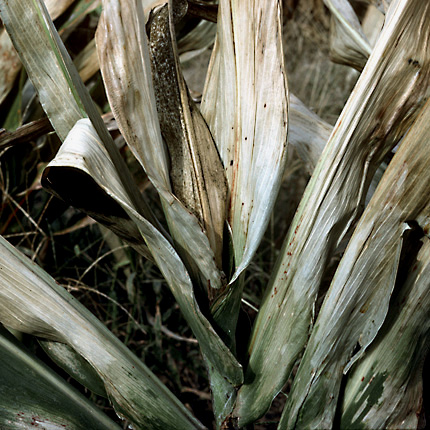
Bacterial stalk and top rot | Sorghum
DISEASE: Bacterial stalk and top rot
HOST: Sorghum (Sorghum bicolor)
PATHOGEN: Dickeya zeae
PATHOGEN SYNONYM: Erwinia chrysanthemi pv. zeae
SOURCE: L. Claflin
DISEASE: Center rot
HOST: Onion
Early symptoms of disease are necrotic, bleached areas on young leaves that typically wilt.

Center rot | Onion
DISEASE: Center rot
HOST: Onion (Allium cepa)
PATHOGEN: Pantoea ananatis
SOURCE: R. Gitaitis
DISEASE: Center rot
HOST: Onion
Advanced stage of center rot. The bacterium has moved down from leaves into the bulb.
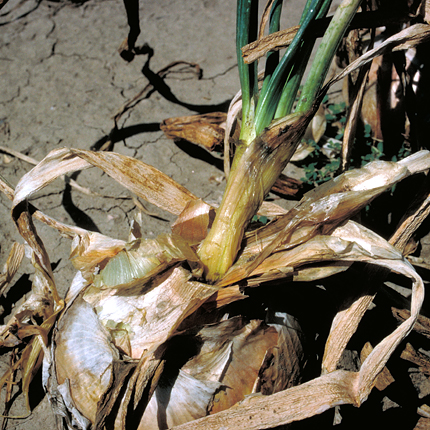
Center rot | Onion
DISEASE: Center rot
HOST: Onion (Allium cepa)
PATHOGEN: Pantoea ananatis
SOURCE: H. Schwartz


